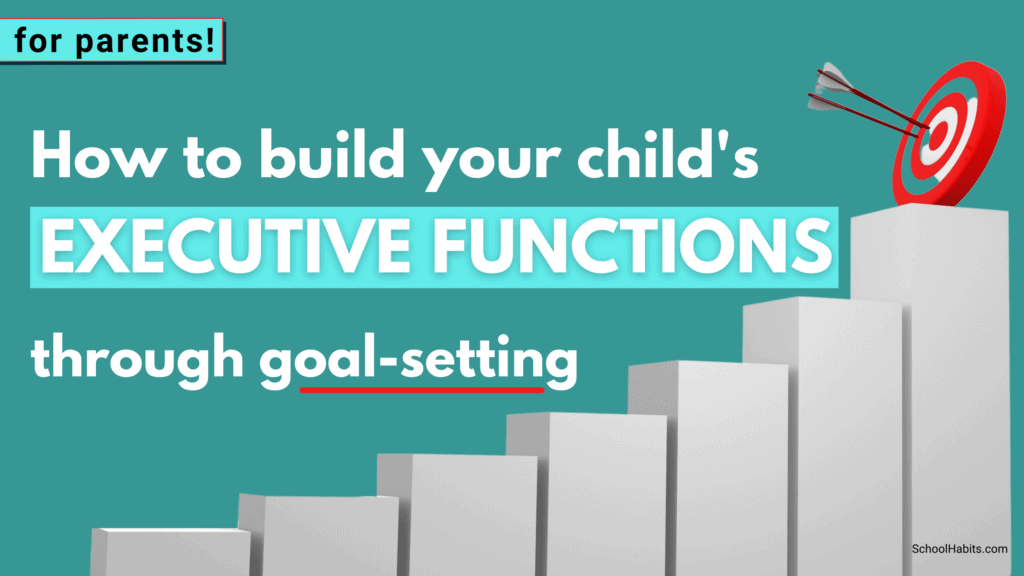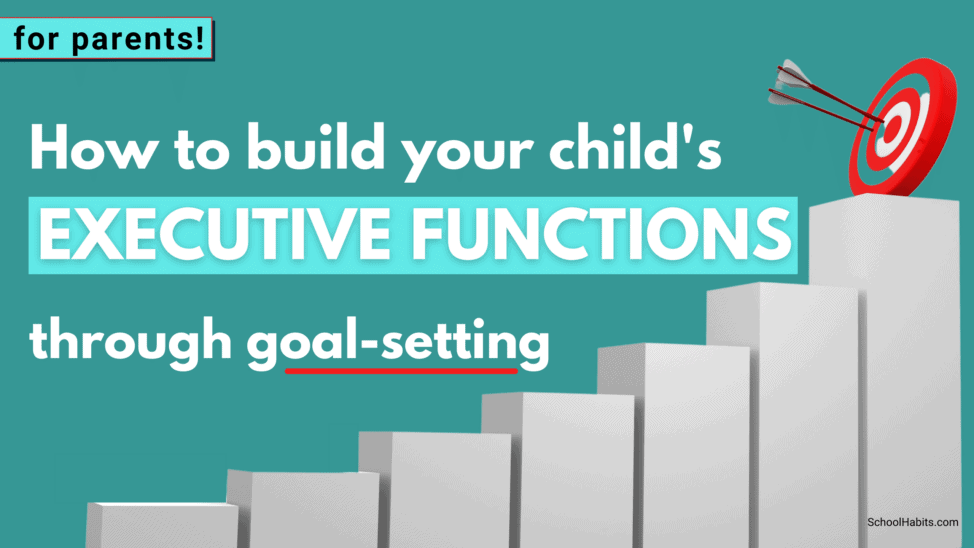
By Katie Azevedo, M.Ed.
Executive functions are the skills required to manage day to day activities, including work, school, time, relationships and impulses. Many people with attention deficit hyperactivity disorder (ADHD) have inadequately developed executive functions.
I write frequently about how to build executive function skills. Here are the 8 primary executive functions and here are 3 pillars to teach executive function skills in students. If you’re new to the topic or if your child has recently been diagnosed with ADHD, start with those two resources, as well as these books by Dr. Ned Hallowell.
A child with executive function deficits will likely struggle in the following areas:
- planning long-term projects
- reaching goals
- managing time
- studying for tests
- turning in assignments on time
- taking notes
- staying focused
- thinking flexibly
- staying organized
- controlling impulses
- reflecting on past experiences
- remembering information
- keeping track of homework
One of the best opportunities for parents to build a child’s executive function skills is through goal-setting. The process of setting, planning, tracking and meeting a goal involves a wide range of executive functions, including the following:
- Planning
- Prioritization
- Impulse control
- Flexible thinking
- Organization
- Time management
How to build your child’s executive function skills through goal setting:
1. Work with your child to set a relevant goal.
This goal should be relevant from your child’s perspective. A strategy: you and your child each write a list of 5 goals (your list includes goals you’d like your child to set; your child’s list includes his or her own goals). When you’ve each completed your lists, swap lists and circle 1-2 goals on the other person’s list that you agree with. One of the circled goals becomes the target goal.
Examples of goals you could try with your child:
- Keep room clean for 10 straight days
- Earn allowance, and save a certain amount of money by a certain time
- Be on time for school for 10 straight school days
- Submit all homework assignments on time for two weeks
- Finish a book by a certain date
- Practice their musical instrument for 20 minutes a day for seven days
2. Set a hard deadline.
Children with executive function deficits, particularly those with ADHD, often struggle to fully recognize the concreteness of time. Sit with your child, pull out an actual paper calendar, mark “Today,” and count aloud the days to an agreed deadline.
Children with ADHD are motivated by urgency, so keep deadlines no longer than one or two weeks away.
3. Work with your child to break down the goal into clear, bite-sized, and concrete steps.
Here’s how to use reverse engineering to break down goals. Each step should be manageably-sized for your child’s age and ability.
4. Use visuals to track progress towards the goal.
Children with poor executive functions almost always have working memory issues. For this reason, your child needs visual reminders of the goal, the deadline, and the steps identified in Tip 3. Make posters, use a visual calendar, use sticky notes, etc. Consider using a goal tracker system like this one I made.
5. Increase novelty with digital reminders.
Novelty is another powerful motivator for children with ADHD and executive function deficits. Capitalize on this fact by encouraging your child to use a habit tracker app or digital reminders to monitor progress towards the goal. Some habit tracker apps game-ify the processes – an obvious motivator.
6. Normalize the language of goal-setting.
Children who lack the language to talk about goals will struggle to set and meet them. Therefore, we must give our children the right verbal tools to understand and talk about the actions we expect them to take. Use strategies like modeling (repetitively demonstrating the task) and think-alouds (narrating your actions and thoughts aloud). Have frequent and candid conversations about your child’s goal progress, and speak openly about your own goals.
Final notes on helping your child build executive functions:
- Remember the 3 pillars of building executive functions: repetition, explicit instruction, and commitment to systems.
- Use frequent, immediate and abundant positive feedback. Kids with ADHD and executive function deficits thrive off immediate positive feedback.
- Keep your child’s first goal-setting activity light and fun. Move on to more demanding goals afterwards.
- To keep goal-setting momentum, plan the next goal as soon as the first one is achieved. Consider alternating personal goals with academic goals.

